Led by trained catechists, our Sunday morning atrium has three levels that are offered from September to June. The first is for children in PreK to SK, the second is for children in grades 1 to 3, and the third is for grades 4 and 5. Each level meets the developmental needs specific to those age groups.
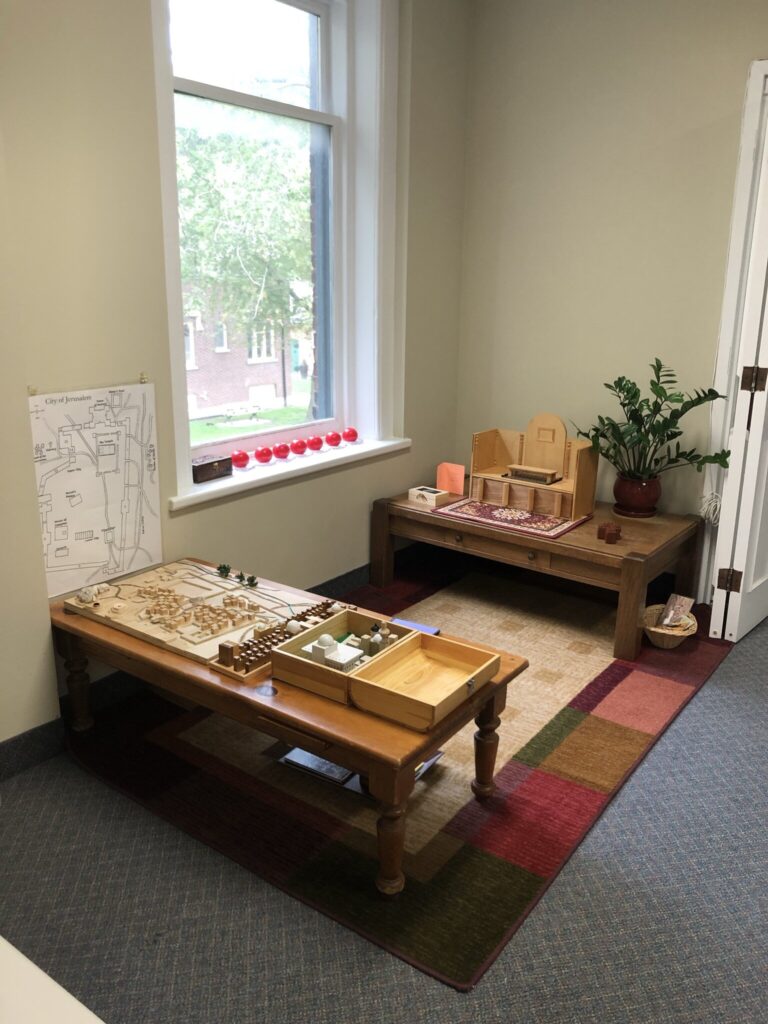

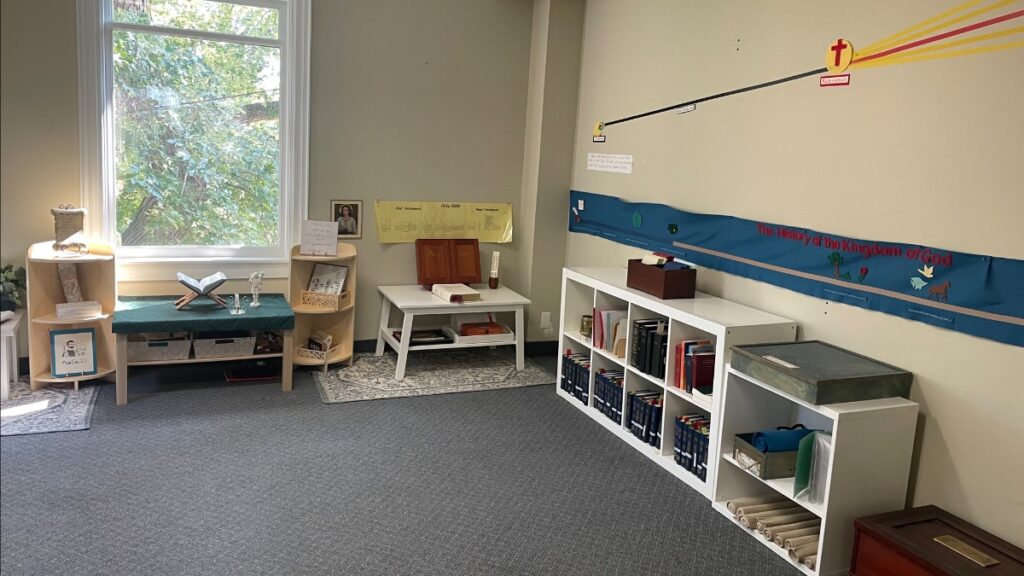
What is an atrium?
An atrium is a place of prayer. According to the Catechesis of the Good Shepherd Canada’s website,
“It is a place of spiritual retreat… in which work easily becomes prayer… a place of worship where children and adults celebrate the Word together…An atrium is a sacred space. It is set apart for children so that they may grow in their relationship with God. The environment is specially prepared to nurture young children in the Christian faith.”
The atrium is not a classroom, and it is not babysitting. It is true spiritual formation for the child. It is an entryway into the church, and a place for discipleship. It prepares the children for worship with adults, and gives them a space to encounter Jesus as who they are: children. All atria contain carefully designed and crafted hands-on materials that encourage children to explore and deepen their experience of God at their own pace. Unlike a classroom designed for instruction, the atrium is a space for community, worship, and meaningful work through which the child can have a conversation with God.
In the atrium, everything in the space is for the child. All the furniture is proportional to the child, and all the materials they work with are age appropriate. Children choose the materials they want to work with. Materials are not toys, but aids in the spiritual process. They meet the child’s developmental needs and spiritual needs. Presentations, either with a scriptural or liturgical focus, are offered by trained catechists throughout the church year.

Who leads in the atrium?
Generally, an atrium is overseen by a catechist, an adult who has undergone Catechesis of the Good Shepherd formation (a training experience using Montessori-based educational principles to explore Biblical and spiritual truths). The catechist’s role is to prepare the environment and to give selected presentations from Scripture and liturgy that “call forth” the child’s response rather than “pour in” information.
We value deeply our atrium assistants (often parents, sometimes youth) who are trained in-house and who support the catechists by observing children and assisting as necessary. Sometimes, as in Level 3, the atrium assistants take on a greater leadership role.
Whether catechist or assistant, the adult’s role in the atrium is to prepare the environment, proclaim the Christian message by means of the various CGS materials, and then step back, allowing God and the child to work together on their relationship. The true teacher is always the Holy Spirit.
Why do we take this approach?
The CGS atriums at Little Trinity began in 2015 as a means of providing spiritual nourishment to toddlers and preschoolers, ages 2 to 4. Then, as more parishioners, parents, and Children’s Ministry staff members experienced this method, they took initiatives to grow the program, resulting in the three atriums that we have today. We see the outcomes: children knowing deeply that they belong in church and to God, children knowing they are valued participants in individual and communal faith, and their enhanced participation in all aspects of worship in their own space and in the congregation.
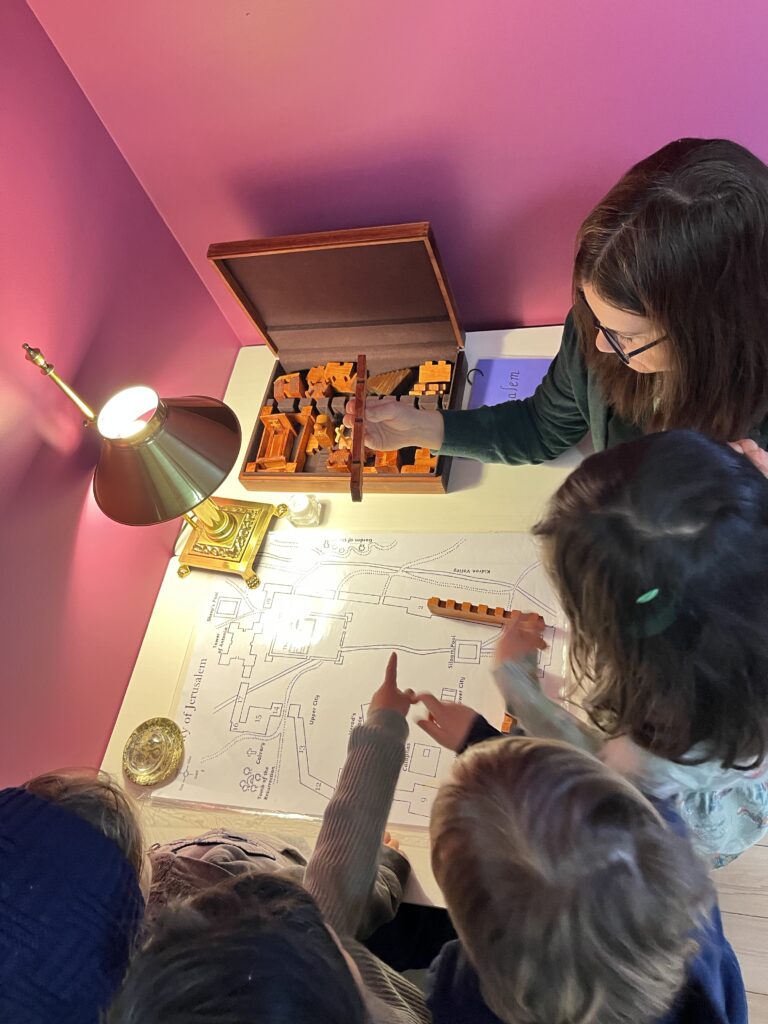
What can parents do to support their children?
We recognize and uphold the principle that parents are the primary catechists in their children’s lives. Our desire is to empower parents as they take the lead role in their children’s faith formation.
For parents who want to know more about the Catechesis approach, there are great resources online at the CGS USA and Canadian websites, including parent newsletters and podcasts that guide parents with implementing CGS principles in the home. Our website also has links to parent resources and for ideas on how to incorporate CGS elements and materials at home.
Read on to discover what a child encounters in each CGS level. Catechists spend time tracking each child’s experiences providing individualized guidance for childen based on their needs and their interests.

Level 1:
Children Ages 3 to 6
At this stage in a child’s development, they experience life in a whole-person way: mind, body, and all the senses are engaged. They are completely present and living in the moment.
The covenant relationship with God is based on the quality of secure, reassuring, and protective love.
What Children Encounter in Level One
The primary purpose of the Level One atrium is to assist the child in coming to a greater awareness of two essential spiritual questions: one, who is God/Jesus?; and two, who am I in relationship to God/Jesus? These questions are addressed by meditating upon the Word of God; familiarizing the child with biblical narratives; exploring the parable of the Good Shepherd and the child’s covenant relationship with God; working with the child as they grow in their awareness of all the various dynamics of our faith and how we celebrate that faith. By using the materials provided in the atrium the child will begin to establish a greater awareness of Jesus as a real person. This awareness will help the child to unlock some of the great mysteries of our faith.
Level One has a great emphasis on practical life works, which involve care for one’s person and for the environment. These activities satisfy needs in the young child for growing in independence and movement, and are ways that the very young child can learn to serve God.
Level 2:
Children Ages 6 to 9
Children in this stage of development have great potential to grasp the world around them, especially with respect to the abstract. They begin to have an understanding of time and history.
The covenant relationship with God is understood as enduring; God’s love is unconditional and remains the same.
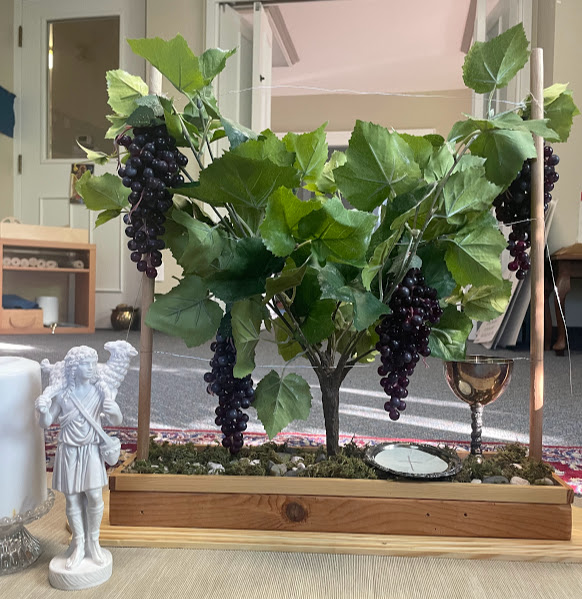
What Children Encounter in Level Two
As children move into the Level Two atrium, their questions centre more on the spiritual “what”: What is God’s plan? What is my role in God’s plan? In response, we study God’s Plan of Salvation as shown to us in the Bible and the gifts that we have received from God through time. The children are developing their moral intelligence, so we listen and reflect together on the parables Jesus told of mercy and justice, as well as His commandments, such as “Do to others what you would have them do to you.” These children are trying to discover their role in God’s plan and their own place in the community of believers—the church—so they are given the tools to enable them to access the Word of God (Bible) and the prayers of the church as we experience the Eucharist and baptism.
The elementary-age child is captured by the image of the True Vine. “I am the vine, you are the branches, whoever remains in me, and I in him, will bear much fruit, because without me you can do nothing.” The proclamation responds to the deep need of these children to better know their relationships with God, family, friends, and the larger community. Moral parables offer a model for comparing their behaviour with that of the Pharisee, the Tax Collector, or the Good Samaritan.
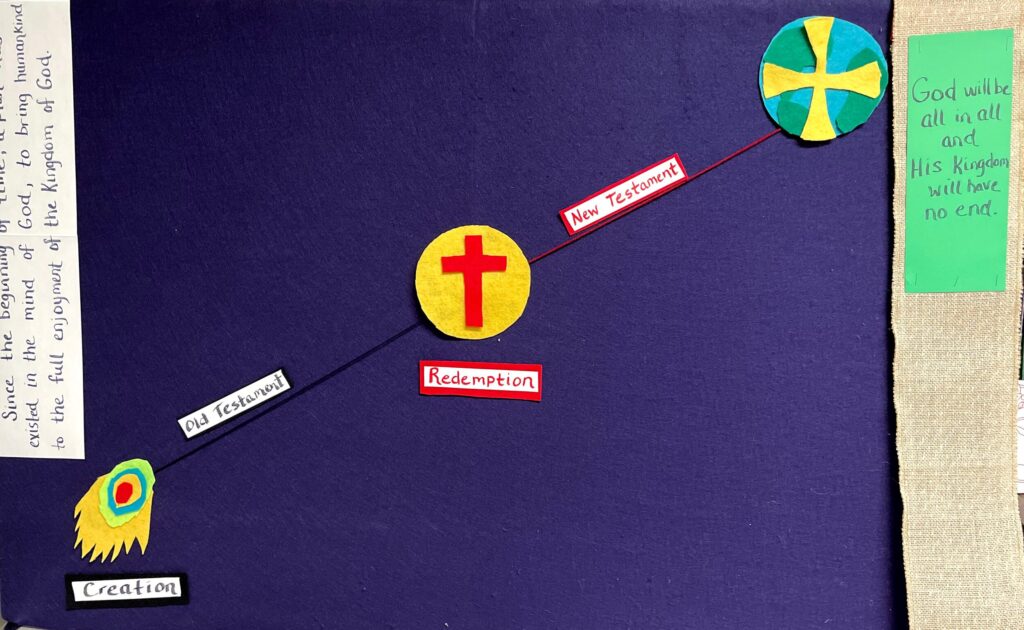
Level 3:
Children Ages 9 to 11
At this age in development, children develop a widening vision of the world, with greater awareness of the significance of their place and gifts within it.
The covenant relationship with God is experienced as empowering.
What Children Encounter in Level Three
In the Level Three atrium, we see the history of salvation focusing on the plan of God as a plan of communion, a plan which links all people together through God’s love. The emphasis is on our response to this unfolding generosity of God and recognition of the responsibilities that come with receiving God’s great gifts and seeing oneself as a collaborator with God. “What is the kingdom of God and my place in it?” is a cosmic query which lays the foundations for a life commitment in relationship with God. Materials on the Prophets of the Old Testament, the Gifts of God, the Miracles of Jesus, and expanded presentations on Liturgy and Scripture can also be found in the Level Three Atrium.
